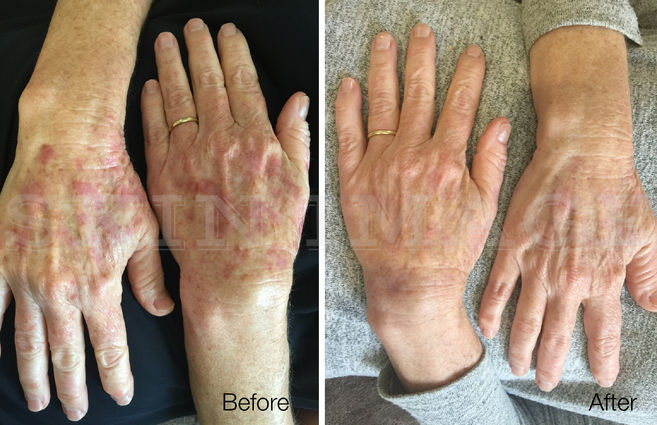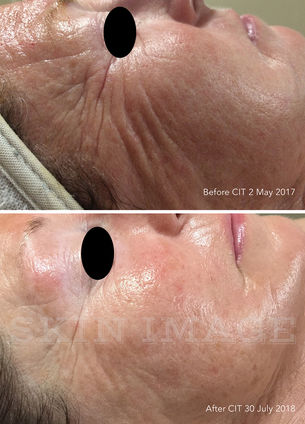
86 The Centre, Waipu - 022 394 1184
Photoageing is damage to the skin caused by repeated exposure to UV radiation (sun light) and artificial UV sources such as sun bed. The damaging effects of UV rays alter normal skin structures and can show up as:
-
visible capillaries on the nose, cheeks and chin
-
pigmented spots, solar lentigines (known as age or liver spots), and uneven skin colour (pigmentation)
-
general loss of skin tone and laxity
-
deep wrinkles around the eyes and mouth even when not frowning
-
red, rough scaly spots called solar keratoses may appear, these may be precancerous and require treatment
Photoageing can begin in the early teens with sports and outdoors activities, damages accumulate over the years and don’t show up til the late 30’s.
Where does photoageing appear?
Photoageing appears on the most visible parts of the body — face, neck, decolletage and back of the hands.
How does photoageing happen?
Photoageing happens when UVB radiation hits the epidermis (outer layer of the skin). It causes sun burns, damaging cell DNA in this layer and over time precancerous cells and skin cancers may develop.
UVA radiation penetrates deeper into skin, to the level of the dermis where collagen and elastin are made. Damaged collagen and elastin cause skin to lose structure and resilience. Melanocytes (cells that make melanin) can get damaged, going into overdrive and making a whole lot of unwanted melanin causing pigmentation. Or the melanocytes get completely damaged and stop making melanin altogether, this shows up as tiny white dots on the skin (like a white freckle where the skin has lost its pigmentation).
UVA is more insidious than UVB because it occurs all year round from sunrise to sunset and you can’t feel it. So on a nice winter’s day, photoageing is actually happening without you being aware.
Normal skin versus photoaged skin.
Up to 90% of ageing is due to the sun’s harsh effects on skin. If you compare skin of an area rarely exposed to the sun (eg the underside of your breast or buttock) to that of the face and décolletage, you will see the difference in tone, colour and texture.
How can I prevent photoageing?
-
Protect skin as best as you can while outside.
-
Wear sunscreen daily even during the winter and not just at times of sun exposure.
-
Don’t use sun beds.
-
Use a moisturiser with key skin vitamins A, B, C and E
How can I minimize visible signs of ageing?
Various treatments are available for sun-damaged skin, some are more invasive than others. At Skin Image, we take a holistic approach to repairing sun-damaged skin.
-
Great nutrition
-
Plenty of water – for hydration and keeping the skin plump.
-
Plenty of fresh fruit & vegetables – great source of antioxidants.
-
Omega 3 essential fatty acids – they are the building blocks to healthy cell membranes which are essential for healthy skin.
-
-
Great skincare
-
Broad spectrum sun cream is a must.
-
Products and makeup must be free of emulsifiers, preservatives, colourants, fragrance and mineral oils as these ingredients compromise skin functions.
-
Products must be physiologic to the skin.
-
-
Safe & proven modalities
-
Dermal needling or Collagen Induction Therapy.
-
Light Therapy.
-
IPL.
-
At the Skin Consultation, we will be able to assess your skin, explain and advise you of the best products, supplements and treatment plans to suit your skin type and lifestyle. Working with sun damaged skin is extremely rewarding as we achieve wonderful results with our protocols.

image courtesy of Savvy Magazine








